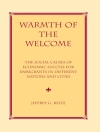Iterations of continuous maps of an interval to itself serve as the simplest examples of models for dynamical systems. These models present an interesting mathematical structure going far beyond the simple equilibrium solutions one might expect. If, in addition, the dynamical system depends on an experimentally controllable parameter, there is a corresponding mathematical structure revealing a great deal about interrelations between the behavior for different parameter values.
This work explains some of the early results of this theory to mathematicians and theoretical physicists, with the additional hope of stimulating experimentalists to look for more of these general phenomena of beautiful regularity, which oftentimes seem to appear near the much less understood chaotic systems. Although continuous maps of an interval to itself seem to have been first introduced to model biological systems, they can be found as models in most natural sciences as well as economics.
Iterated Maps on the Interval as Dynamical Systems is a classic reference used widely by researchers and graduate students in mathematics and physics, opening up some new perspectives on the study of dynamical systems .
Innehållsförteckning
Motivation and Interpretation.- One-Parameter Families of Maps.- Typical Behavior for One Map.- Parameter Dependence.- Systematics of the Stable Periods.- On the Relative Frequency of Periodic and Aperiodic Behavior.- Scaling and Related Predictions.- Higher Dimensional Systems.- Properties of Individual Maps.- Unimodal Maps and Thier Itineraries.- The Calculus of Itineraries.- Itineraries and Orbits.- Negative Schwarzian Derivative.- Homtervals.- Topological Conjugacy.- Sensitive Dependence on Initial Conditions.- Ergodic Properties.- Properties of one-Parameter families of maps.- One-Parameter Families of Maps.- Abundance of Aperiodic Behavior.- Universal Scaling.- Multidimensional Maps.












